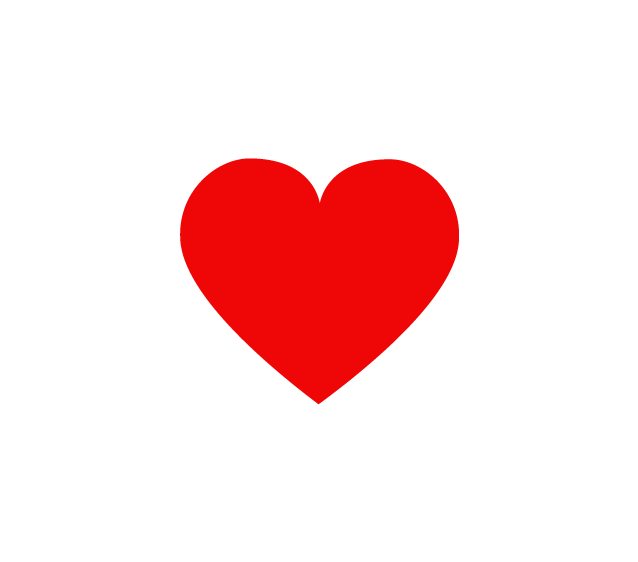The meridians are the natural pharmacy of the human body, and to control this divine treasure, it is sufficient to understand the operational principles of the 12 meridians. This is the essence of the entire meridian theory in Traditional Chinese Medicine (TCM).There are over three hundred acupuncture points on the twelve meridians, and we do not need to memorize them all. Now, you just need to carefully read this article, and learning will become much easier.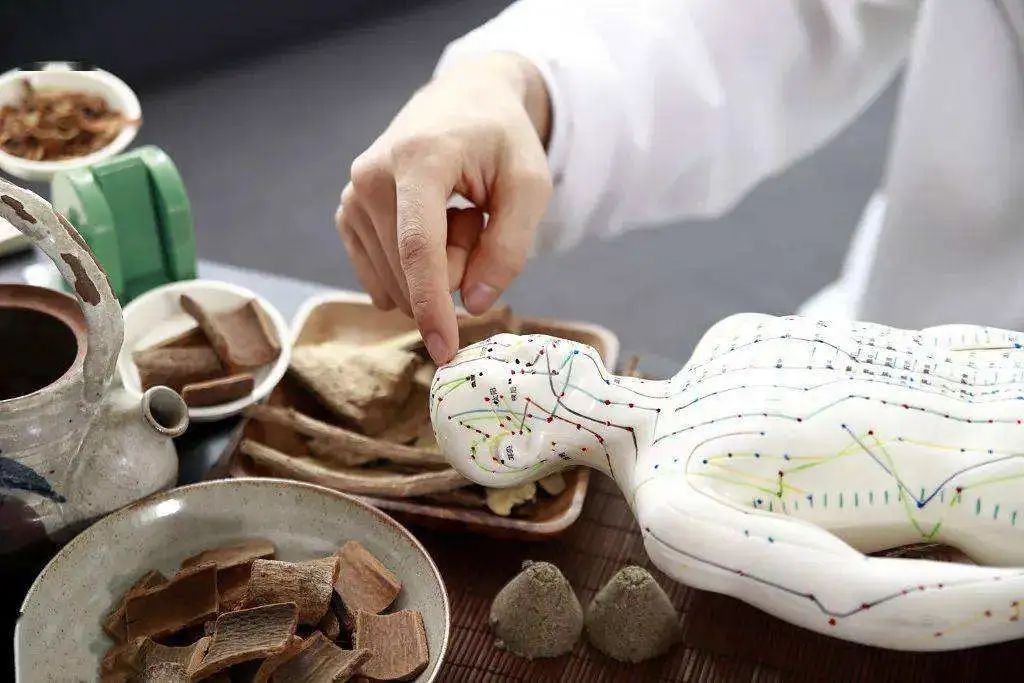 First, familiarize yourself with the names of the 12 meridiansInner side of the arms:Shou Shaoyin Xin Jing (Hand Shaoyin Heart Meridian), Shou Jueyin Xinbao Jing (Hand Jueyin Pericardium Meridian), Shou Taiyin Fei Jing (Hand Taiyin Lung Meridian);Outer side of the arms:Shou Taiyang Xiao Chang Jing (Hand Taiyang Small Intestine Meridian), Shou Shaoyang Sanjiao Jing (Hand Shaoyang Triple Burner Meridian), Shou Yangming Da Chang Jing (Hand Yangming Large Intestine Meridian);Inner side of the legs:Zu Shaoyin Shen Jing (Foot Shaoyin Kidney Meridian), Zu Jueyin Gan Jing (Foot Jueyin Liver Meridian), Zu Taiyin Pi Jing (Foot Taiyin Spleen Meridian);Outer side of the legs:Zu Taiyang Pangguang Jing (Foot Taiyang Bladder Meridian), Zu Shaoyang Dan Jing (Foot Shaoyang Gallbladder Meridian), Zu Yangming Wei Jing (Foot Yangming Stomach Meridian);There are 6 meridians on the arms and 6 meridians on the legs.
First, familiarize yourself with the names of the 12 meridiansInner side of the arms:Shou Shaoyin Xin Jing (Hand Shaoyin Heart Meridian), Shou Jueyin Xinbao Jing (Hand Jueyin Pericardium Meridian), Shou Taiyin Fei Jing (Hand Taiyin Lung Meridian);Outer side of the arms:Shou Taiyang Xiao Chang Jing (Hand Taiyang Small Intestine Meridian), Shou Shaoyang Sanjiao Jing (Hand Shaoyang Triple Burner Meridian), Shou Yangming Da Chang Jing (Hand Yangming Large Intestine Meridian);Inner side of the legs:Zu Shaoyin Shen Jing (Foot Shaoyin Kidney Meridian), Zu Jueyin Gan Jing (Foot Jueyin Liver Meridian), Zu Taiyin Pi Jing (Foot Taiyin Spleen Meridian);Outer side of the legs:Zu Taiyang Pangguang Jing (Foot Taiyang Bladder Meridian), Zu Shaoyang Dan Jing (Foot Shaoyang Gallbladder Meridian), Zu Yangming Wei Jing (Foot Yangming Stomach Meridian);There are 6 meridians on the arms and 6 meridians on the legs.
There are 3 Yin meridians on the inner side of the arms and legs; there are also 3 Yang meridians on the outer side of the arms and legs.
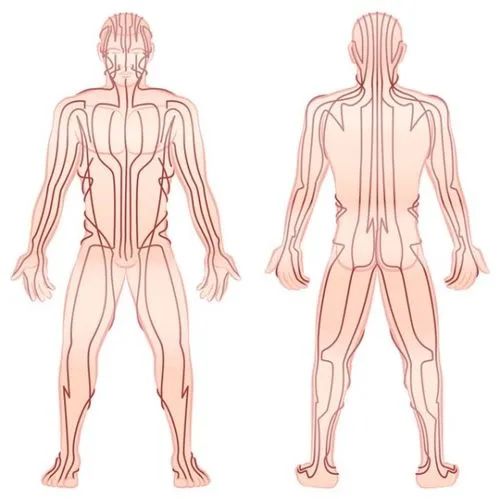
These 12 meridians connect to 12 organs in the body, and it is important to remember the names of these 12 organs. If you feel discomfort in any part of your body, check which meridian passes through that area, and you will find the corresponding organ.What do Shaoyin, Jueyin, Taiyin, Taiyang, Shaoyang, and Yangming represent?They represent the heaviness and lightness of Yin energy, and the fullness and weakness of Yang energy.Yangming means the most abundant Yang energy (least Yin energy); Shaoyang has relatively weak Yang energy (but more Yin energy); Taiyang has sufficient Yang energy (but less Yin energy). Shaoyin has less Yin energy and more Yang energy; Jueyin transitions from Yin to Yang; Taiyin has heavier Yin energy and weaker Yang energy. The twelve meridians operate in this cycle of Yin and Yang.
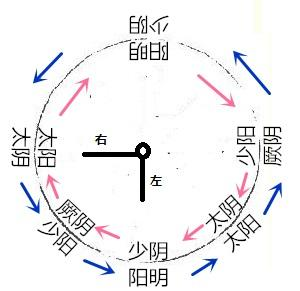
Why did our ancestors subdivide Yin and Yang to such an extent? It is to remind you to pay attention to the balance of Yin and Yang when using the meridians. For example, if the body is weak, it is best to first choose to massage the Yang meridians to replenish the Zhengqi (vital energy); the Yin meridians should be addressed only after the Zhengqi has been replenished; if the body is healthy, both Yin and Yang meridians can be massaged.
The balance of Yin and Yang in the meridians is related to the temperature of the four seasons. In summer, when Yang energy is at its peak, even those with weak bodies can unblock the Yin meridians. The theory of Yin and Yang balance can also be applied to the techniques used in massage, such as using tonifying techniques for Yin meridian massage and dispersing techniques for Yang meridian massage.
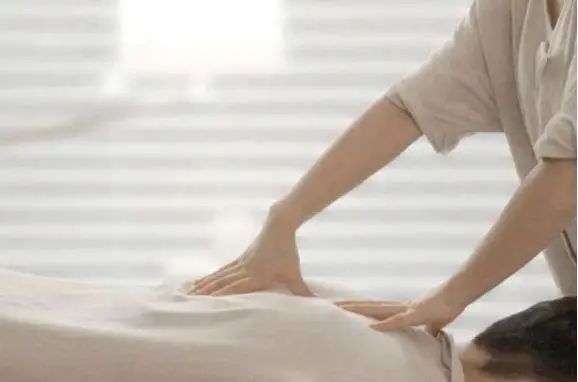
What are the tonifying and dispersing techniques in massage?Generally speaking, massaging along the meridian is tonifying, while massaging against the meridian is dispersing.Light pressure during massage is tonifying, while heavy pressure is dispersing.Short duration of massage is tonifying, while long duration is dispersing.Small area of massage is tonifying, while large area is dispersing.Do you need to memorize all three hundred acupuncture points for massage and moxibustion?No, it is not necessary.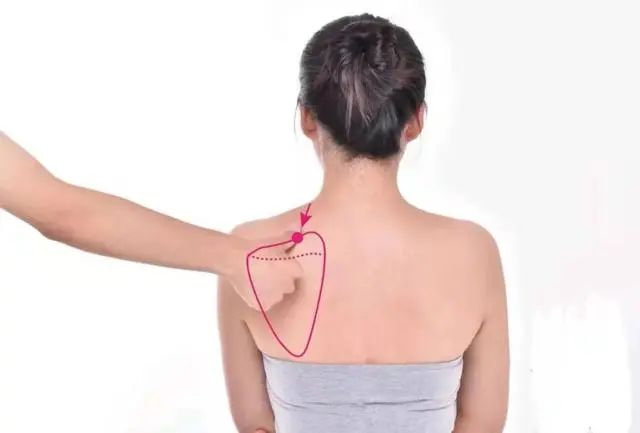 There is a saying in TCM: “Pain is the point of focus,” meaning that the area of pain is an important acupuncture point to pay attention to. For example, for heart-related diseases, you can slowly press along the corresponding Xin Jing (Heart Meridian) and Xinbao Jing (Pericardium Meridian) to feel the sensations along the entire meridian.If some areas feel sore, some feel sharp pain, some feel numb, and some feel swollen, then you should focus your massage on the most painful area, kneading and dispersing the disease, and even using cupping, moxibustion, or tapping can be effective. The more pronounced the pain, the more you should persist in stimulating that area, and your body’s condition will improve quickly.If you only memorize all the acupuncture points but ignore the most painful point, the treatment effect will not be good.Friends of moxibustion, just remember the pathways of these twelve meridians, the pain points on each meridian, and three to five major acupuncture points, and you will have no problem with daily moxibustion or tuina (Chinese therapeutic massage). Please see the image below.
There is a saying in TCM: “Pain is the point of focus,” meaning that the area of pain is an important acupuncture point to pay attention to. For example, for heart-related diseases, you can slowly press along the corresponding Xin Jing (Heart Meridian) and Xinbao Jing (Pericardium Meridian) to feel the sensations along the entire meridian.If some areas feel sore, some feel sharp pain, some feel numb, and some feel swollen, then you should focus your massage on the most painful area, kneading and dispersing the disease, and even using cupping, moxibustion, or tapping can be effective. The more pronounced the pain, the more you should persist in stimulating that area, and your body’s condition will improve quickly.If you only memorize all the acupuncture points but ignore the most painful point, the treatment effect will not be good.Friends of moxibustion, just remember the pathways of these twelve meridians, the pain points on each meridian, and three to five major acupuncture points, and you will have no problem with daily moxibustion or tuina (Chinese therapeutic massage). Please see the image below. 1. Shou Taiyin Fei Jing (Hand Taiyin Lung Meridian)2. Shou Yangming Da Chang Jing (Hand Yangming Large Intestine Meridian)3. Shou Jueyin Xinbao Jing (Hand Jueyin Pericardium Meridian)4. Shou Shaoyang Sanjiao Jing (Hand Shaoyang Triple Burner Meridian)5. Shou Shaoyin Xin Jing (Hand Shaoyin Heart Meridian)6. Shou Taiyang Xiao Chang Jing (Hand Taiyang Small Intestine Meridian)7. Zu Jueyin Gan Jing (Foot Jueyin Liver Meridian)8. Zu Shaoyang Dan Jing (Foot Shaoyang Gallbladder Meridian)9. Zu Shaoyin Shen Jing (Foot Shaoyin Kidney Meridian)10. Zu Taiyang Pangguang Jing (Foot Taiyang Bladder Meridian)11. Zu Taiyin Pi Jing (Foot Taiyin Spleen Meridian)12. Zu Yangming Wei Jing (Foot Yangming Stomach Meridian)
1. Shou Taiyin Fei Jing (Hand Taiyin Lung Meridian)2. Shou Yangming Da Chang Jing (Hand Yangming Large Intestine Meridian)3. Shou Jueyin Xinbao Jing (Hand Jueyin Pericardium Meridian)4. Shou Shaoyang Sanjiao Jing (Hand Shaoyang Triple Burner Meridian)5. Shou Shaoyin Xin Jing (Hand Shaoyin Heart Meridian)6. Shou Taiyang Xiao Chang Jing (Hand Taiyang Small Intestine Meridian)7. Zu Jueyin Gan Jing (Foot Jueyin Liver Meridian)8. Zu Shaoyang Dan Jing (Foot Shaoyang Gallbladder Meridian)9. Zu Shaoyin Shen Jing (Foot Shaoyin Kidney Meridian)10. Zu Taiyang Pangguang Jing (Foot Taiyang Bladder Meridian)11. Zu Taiyin Pi Jing (Foot Taiyin Spleen Meridian)12. Zu Yangming Wei Jing (Foot Yangming Stomach Meridian)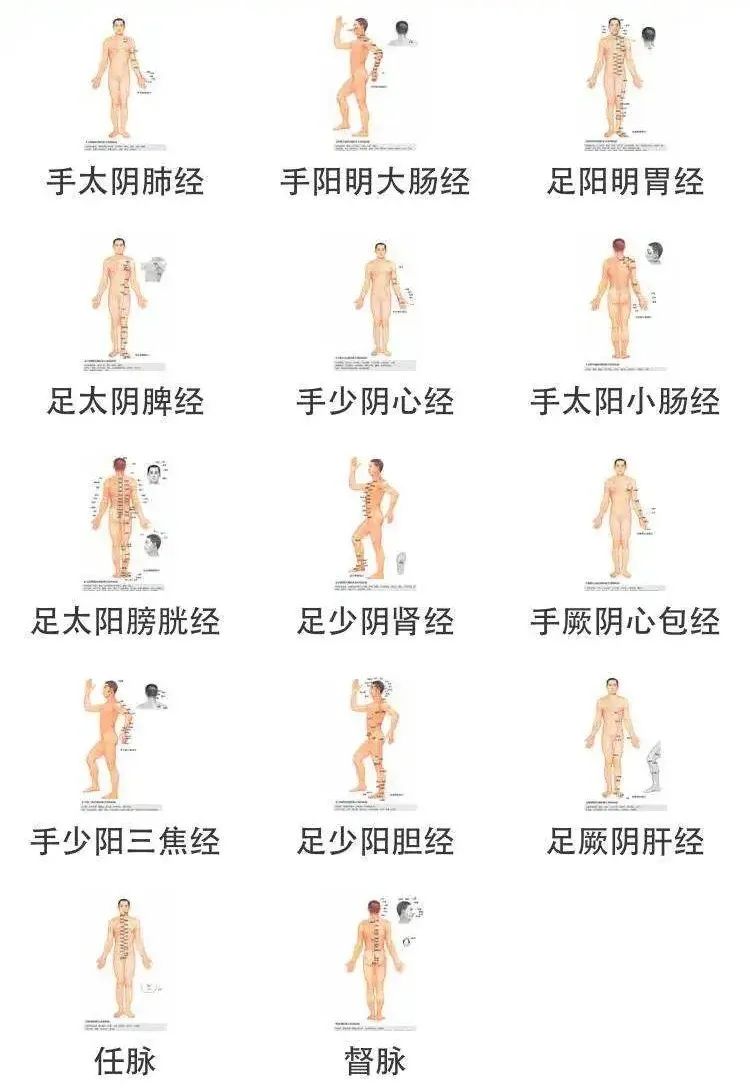 Appendix: Opening Times for the Twelve Meridians1. 3 AM – 5 AM (Yin Hour) is the time for the Lung Meridian to open.2. 5 AM – 7 AM (Mao Hour) is the time for the Large Intestine Meridian to open.3. 7 AM – 9 AM (Chen Hour) is the time for the Stomach Meridian to open.4. 9 AM – 11 AM (Si Hour) is the time for the Spleen Meridian to open.5. 11 AM – 1 PM (Wu Hour) is the time for the Heart Meridian to open.6. 1 PM – 3 PM (Wei Hour) is the time for the Small Intestine Meridian to open.7. 3 PM – 5 PM (Shen Hour) is the time for the Bladder Meridian to open.8. 5 PM – 7 PM (You Hour) is the time for the Kidney Meridian to open.9. 7 PM – 9 PM (Xu Hour) is the time for the Pericardium Meridian to open.10. 9 PM – 11 PM (Hai Hour) is the time for the Triple Burner Meridian to open.11. 11 PM – 1 AM (Zi Hour) is the time for the Gallbladder Meridian to open.12. 1 AM – 3 AM (Chou Hour) is the time for the Liver Meridian to open.
Appendix: Opening Times for the Twelve Meridians1. 3 AM – 5 AM (Yin Hour) is the time for the Lung Meridian to open.2. 5 AM – 7 AM (Mao Hour) is the time for the Large Intestine Meridian to open.3. 7 AM – 9 AM (Chen Hour) is the time for the Stomach Meridian to open.4. 9 AM – 11 AM (Si Hour) is the time for the Spleen Meridian to open.5. 11 AM – 1 PM (Wu Hour) is the time for the Heart Meridian to open.6. 1 PM – 3 PM (Wei Hour) is the time for the Small Intestine Meridian to open.7. 3 PM – 5 PM (Shen Hour) is the time for the Bladder Meridian to open.8. 5 PM – 7 PM (You Hour) is the time for the Kidney Meridian to open.9. 7 PM – 9 PM (Xu Hour) is the time for the Pericardium Meridian to open.10. 9 PM – 11 PM (Hai Hour) is the time for the Triple Burner Meridian to open.11. 11 PM – 1 AM (Zi Hour) is the time for the Gallbladder Meridian to open.12. 1 AM – 3 AM (Chou Hour) is the time for the Liver Meridian to open.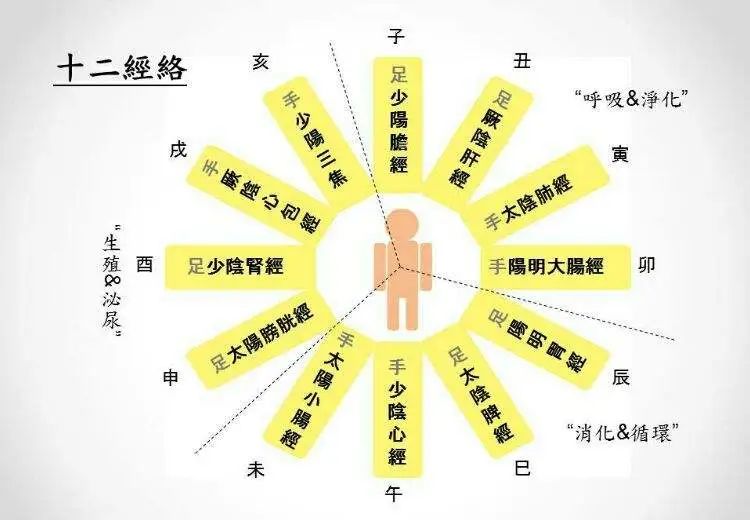 Additional Information:Distribution Patterns of the Twelve Meridians on the Body SurfaceThe twelve meridians are symmetrically distributed on the left and right sides of the head, trunk, and limbs, running throughout the body. The six Yin meridians are located on the inner sides of the limbs and the chest and abdomen, while the six Yang meridians are located on the outer sides of the limbs and the head, trunk.The distribution pattern of the twelve meridians in the limbs is as follows: the three Yin meridians of the upper limbs are the Shou Taiyin Fei Jing (Hand Taiyin Lung Meridian) in front, Shou Jueyin Xinbao Jing (Hand Jueyin Pericardium Meridian) in the middle, and Shou Shaoyin Xin Jing (Hand Shaoyin Heart Meridian) at the back; the three Yin meridians of the lower limbs are the Zu Taiyin Pi Jing (Foot Taiyin Spleen Meridian) in front, Zu Jueyin Gan Jing (Foot Jueyin Liver Meridian) in the middle, and Zu Shaoyin Shen Jing (Foot Shaoyin Kidney Meridian) at the back.Among them, the three Yin meridians of the foot are located below the inner ankle, with Jueyin in front, Taiyin in the middle, and Shaoyin at the back; above 8 cun from the inner ankle, Taiyin exits before Jueyin. The three Yang meridians of the upper limbs are the Shou Yangming Da Chang Jing (Hand Yangming Large Intestine Meridian) in front, Shou Shaoyang Sanjiao Jing (Hand Shaoyang Triple Burner Meridian) in the middle, and Shou Taiyang Xiao Chang Jing (Hand Taiyang Small Intestine Meridian) at the back.
Additional Information:Distribution Patterns of the Twelve Meridians on the Body SurfaceThe twelve meridians are symmetrically distributed on the left and right sides of the head, trunk, and limbs, running throughout the body. The six Yin meridians are located on the inner sides of the limbs and the chest and abdomen, while the six Yang meridians are located on the outer sides of the limbs and the head, trunk.The distribution pattern of the twelve meridians in the limbs is as follows: the three Yin meridians of the upper limbs are the Shou Taiyin Fei Jing (Hand Taiyin Lung Meridian) in front, Shou Jueyin Xinbao Jing (Hand Jueyin Pericardium Meridian) in the middle, and Shou Shaoyin Xin Jing (Hand Shaoyin Heart Meridian) at the back; the three Yin meridians of the lower limbs are the Zu Taiyin Pi Jing (Foot Taiyin Spleen Meridian) in front, Zu Jueyin Gan Jing (Foot Jueyin Liver Meridian) in the middle, and Zu Shaoyin Shen Jing (Foot Shaoyin Kidney Meridian) at the back.Among them, the three Yin meridians of the foot are located below the inner ankle, with Jueyin in front, Taiyin in the middle, and Shaoyin at the back; above 8 cun from the inner ankle, Taiyin exits before Jueyin. The three Yang meridians of the upper limbs are the Shou Yangming Da Chang Jing (Hand Yangming Large Intestine Meridian) in front, Shou Shaoyang Sanjiao Jing (Hand Shaoyang Triple Burner Meridian) in the middle, and Shou Taiyang Xiao Chang Jing (Hand Taiyang Small Intestine Meridian) at the back.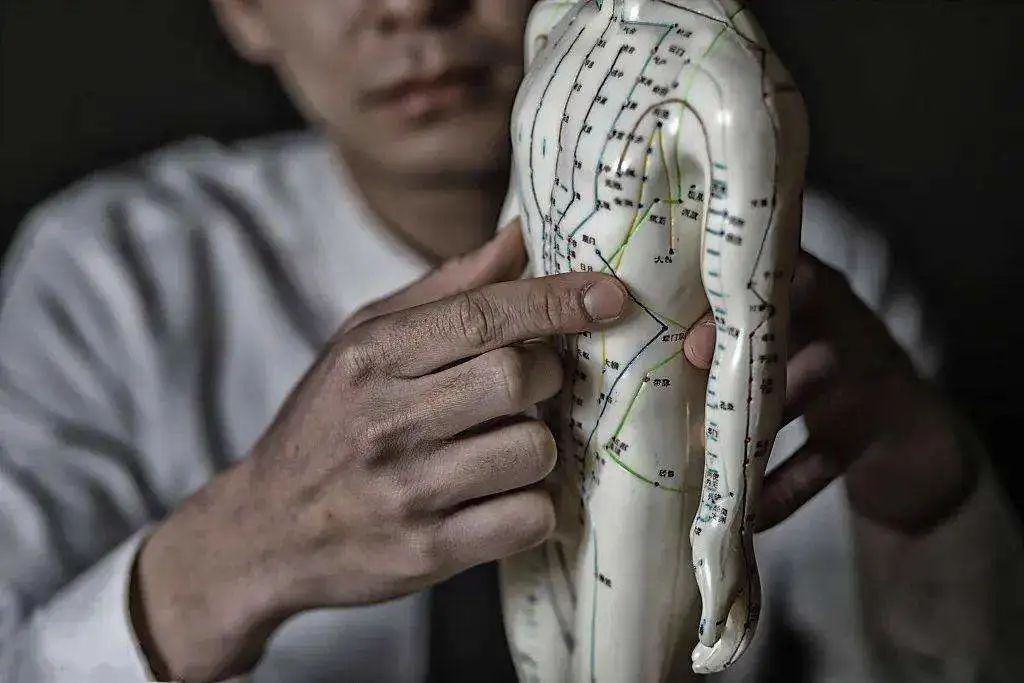 The three Yang meridians of the lower limbs are the Zu Yangming Wei Jing (Foot Yangming Stomach Meridian) in front, Zu Shaoyang Dan Jing (Foot Shaoyang Gallbladder Meridian) in the middle, and Zu Taiyang Pangguang Jing (Foot Taiyang Bladder Meridian) at the back. The distribution of the twelve meridians in the trunk is as follows: the Zu Shaoyin Shen Jing (Foot Shaoyin Kidney Meridian) is located 2 cun from the midline of the chest, and the Zu Taiyin Pi Jing (Foot Taiyin Spleen Meridian) is located 6 cun from the midline of the chest and 4 cun from the midline of the abdomen; the Zu Jueyin Gan Jing (Foot Jueyin Liver Meridian) has a less defined pathway.The Zu Yangming Wei Jing (Foot Yangming Stomach Meridian) is located 4 cun from the midline of the chest and 2 cun from the midline of the abdomen; the Zu Taiyang Pangguang Jing (Foot Taiyang Bladder Meridian) runs along the back, distributed 1.5 cun and 3 cun from the midline of the back; the Zu Shaoyang Dan Jing (Foot Shaoyang Gallbladder Meridian) is distributed on the side of the body.Click the card below to follow
The three Yang meridians of the lower limbs are the Zu Yangming Wei Jing (Foot Yangming Stomach Meridian) in front, Zu Shaoyang Dan Jing (Foot Shaoyang Gallbladder Meridian) in the middle, and Zu Taiyang Pangguang Jing (Foot Taiyang Bladder Meridian) at the back. The distribution of the twelve meridians in the trunk is as follows: the Zu Shaoyin Shen Jing (Foot Shaoyin Kidney Meridian) is located 2 cun from the midline of the chest, and the Zu Taiyin Pi Jing (Foot Taiyin Spleen Meridian) is located 6 cun from the midline of the chest and 4 cun from the midline of the abdomen; the Zu Jueyin Gan Jing (Foot Jueyin Liver Meridian) has a less defined pathway.The Zu Yangming Wei Jing (Foot Yangming Stomach Meridian) is located 4 cun from the midline of the chest and 2 cun from the midline of the abdomen; the Zu Taiyang Pangguang Jing (Foot Taiyang Bladder Meridian) runs along the back, distributed 1.5 cun and 3 cun from the midline of the back; the Zu Shaoyang Dan Jing (Foot Shaoyang Gallbladder Meridian) is distributed on the side of the body.Click the card below to follow

